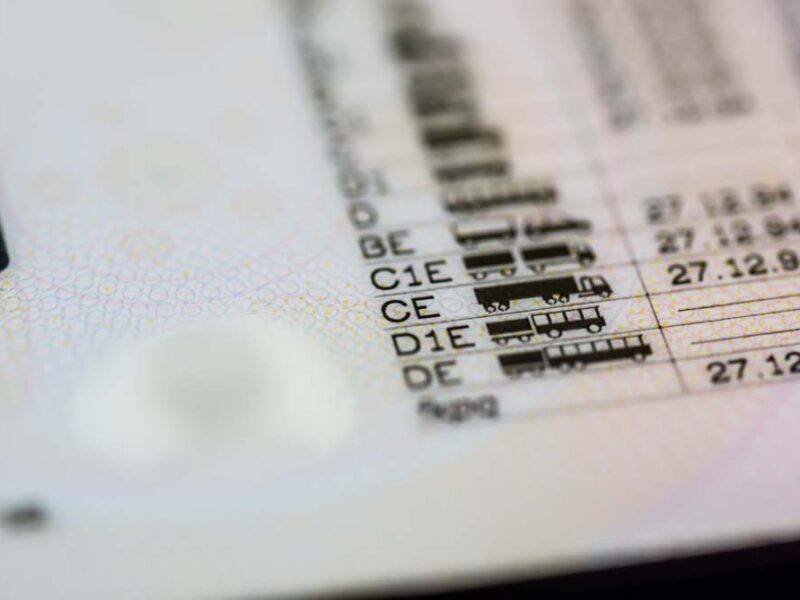The DVSA's updated Guide to Maintaining Roadworthiness was released in April 2018. At the time of it's release there were a reported 73,458 goods vehicle operator's licenses and 8,836 bus and coach operator's licences in circulation. What that should mean is that over 80,000 copies of the newly updated guide ought to have been downloaded by HGV or PSV operators and that by now, at the end of summer 2018, those updates and new guidance should be incorporated into operators' safety and maintenance procedures. Especially, as previous editions of the Guide made clear, and the latest edition emphasises; it is the operator's responsibility to ensure that its vehicles and trailers are safe on the road.
The Importance of The Guide:
The purpose of the Guide is unchanged. It is published to offer guidance to operators on the steps that they ought to take in order to ensure that their vehicles are safe on the road.
The Guide is endorsed by the Traffic Commissioners and is frequently referred to in Public Inquires. When DVSA vehicle examiner officers visit operators to carry out maintenance assessments, they make specific reference to the Guide (and to the DVSA's Categorisation of Defects, if they find anything wrong with vehicles or trailers).
It is trite, but nevertheless relevant, to observe that knowing what the Guide says will not only help operators keep their vehicles and trailers safe, but it will also mean that they are more likely to satisfy the DVSA at any assessment (and so avoid the issue of prohibitions or the threat of being called to Public Inquiry).
So What is New?
The good news for operators is that the Guide is not a complete re-write (and it would be odd if it was, because many of the fundamentals set out in previous editions are just that). Much of the material will therefore be familiar and for operators who were already following the 2014 edition of the Guide this update ought to help not hinder.
That being said, it is worth operators noting the following:
More detailed guidance relating to IT for Vehicle Maintenance Systems
- This guidance had previously been published as a separate standalone document, but it has now been incorporated into the Guide. The guidance provides details on what a good IT maintenance system should do including some of the key features of a computerised system (for example, the capability to print hard copies of maintenance records upon request) and advice on how to keep electronic maintenance systems secure.
- Guidance is also provided on what is becoming an increasingly common method of using electronic handheld devices for the completion of walk around checks.
Maintenance facilities - adequacy and accreditation
- Whilst the general list of what a maintenance facility should include is largely the same (with reference now being made to emissions testing equipment), the new Guide adds an advisory note that for operators who do their own maintenance, it is important that they ensure that their own in-house facilities are adequate for the job.
- To this is added the strong recommendation that workshops and fitters are accredited.
Tyre Management
- Given that, according to the DVSA, tyre defects are among the most common safety related problems that they come across, it is no great surprise that there is the addition of a new section on a Tyre Management System, which includes advice on checking a tyre's age, the appropriateness for the vehicle, the importance of making sure that staff dealing with tyres are properly trained, and that drivers are equipped to recognise and report tyre issues.
Brake Performance
- This is another section which has been substantially extended with the inclusion of guidance which had previously been published elsewhere - this time, in relation to Electronic Braking Performance Monitoring Systems (EBPMS) which the DVSA acknowledges can be effective in supplementing maintenance arrangements, including recommending the use of an EBPMS for trailer brake testing.
- Perhaps more importantly, the Guide states that it is 'essential' that whichever system is used for brake testing at regular safety inspections it must be capable of providing evidence of the performance results which can be included in, or appended to, the safety inspection sheet.
- Operators should expect to be marked down if the DVSA finds that the brake test results are missing, and they should not assume that an entry "Road Test - brakes ok" will be sufficient.
Emissions
- Predictably, given the widespread press coverage on emissions and Emulator 'cheat devices', the Guide includes a new section providing guidance on the maintenance of vehicles' emissions control systems - with specific reference to operators and drivers ensuring that AdBlue levels are correctly maintained.
Updated Sample Defect Report Sheet and Safety Inspection Sheet
- In line with some of the new recommendations discussed above, the sample walk round check sheet has been amended to include a check for AdBlue (as well as a check for vehicle height), whilst the sample regular safety inspection sheet now includes a section to record road test brake temperatures.
- More is also made of the importance of operators monitoring the work that is done to check their vehicles and trailers, and as the Guide states "Continuous reviewing and monitoring of the quality of the systems in place is essential to ensure that they are sufficiently comprehensive to do the job". The daily vehicle and trailer checks (frequently carried out by drivers immediately before they drive) are highlighted as being especially important, as is the importance of effectively monitoring these checks and the way in which they are recorded.
Monitoring - Earned Recognition
- There is a new section in the Guide explaining how the DVSA's new "Earned Recognition Scheme" works and what operators are required to demonstrate to be eligible. Click here for more information on this Scheme.
Goodbye to Annex Four
- The graph which had previously been recommended for assessing the suitable safety inspection frequency interval has been disposed of and replaced with a table, setting out a range of operating conditions which it is recommended are used as the new basis for the right interval to use.
- Operators wishing to change the inspection intervals need to ensure that any changes are recorded using the Vehicle Operator Licensing ('VOL') system online. Usefully, the Guide includes a number of Case Studies setting out how inspection intervals can be set and explaining what updates to VOL are required.
What Should Operators Do?
- Download and read the new Guide (click here to view), transport managers and those working for them in the traffic office ought to know what the Guide says.
- Review the systems and records already in place and consider what changes, if any, need to be made.
- Ensure that all maintenance providers whether internal or external, have access to, and have read the new Guide.
- Make a note of the changes, and take action - few if any operators will have nothing to do to ensure that the new Guide's updated recommendations are followed.
Richard P. Pelly © June 2018. Article first appeared in Croner-I.

More News and Insight

Murky Mini-Bus Waters in UK?
There has been reports in the industry news concerning the number of illegal operators of mini bus services who are operating un-hindered by the regulatory enforcement agencies…

Driver CPC – Changes Coming in 2024 and 2025
The Driver Certificate of Professional Competence (DCPC) was introduced in the UK in 2007, as specified in EU Directive 2003/59/EC for all commercial drivers…

Changes to Code of Practice for Enforcement of Weighing of Vehicles
All commercial vehicles being used on the highways and byways of the UK have a maximum weight that they are allowed to carry which is usually determined by type of vehicle…

Social Media – Have you Thought about your Employees’ Use?
Social Media is all encompassing in the modern world, but although it brings many positives, it can place employers in vulnerable positions if their employees’ use is not carefully defined…

Changes to the Clandestine Entrant Civil Penalty Scheme means a Stitch in Time Really Does Save Nine!
The Clandestine Entrant Civil Penalty Scheme has been in place for over 20 years. It is designed to complement law enforcement activity against criminals who smuggle people into the UK illegally as well as deter those who decide to try to enter the country without permission…

Driving in the UK? Read about the latest Rule Changes in 2024
Earlier this year various new driving laws were introduced, impacting both standard road users as well as HGV and PSV road users across England, Wales & Scotland. If you are driving in the UK, especially if you are a commercial driver, then you should ensure that you are aware of these amendments and new rules…

Self-Driving Cars on UK Roads to be Reality by 2026
It seems that one of the first areas that will be breaking the ground in the AI revolution into most people’s everyday lives will be Self-Driving cars! Of course we have heard all this before, and more than once!

Are You Taking your Responsibilities to Maintain your Vehicles Seriously?
Running a haulage business is not an easy undertaking. There are a multitude of decisions to be made on a daily basis before any driver actually gets behind the wheel and delivers the goods (or passengers!).

Update to the Guide to Registering & Operating Local Bus Services in England & Wales
The Senior Traffic Commissioner’s guide to registering and operating local bus services in England and Wales is intended to help operators of local bus services understand the requirements for registering a service.

Changes to the HGV & PSV Test Regime for Earned Recognition Operators
In March 2021 the Government began a review into the processes for commercial vehicle testing to look at ways it could improve the regime for operators whilst still maintaining high safety standards for any vehicle used commercially on the UK’s roads.

Employment Law Updates for 2024
The Government has confirmed several legislative employment law changes to be implemented 2024, which aim to bring about a “fairer workplace for employees”.

Campaign to Bar Schools from using Section 19 Permits
In March 2024 a campaign was started to end the operation of minibuses by schools and colleges under Section 19 permits.
